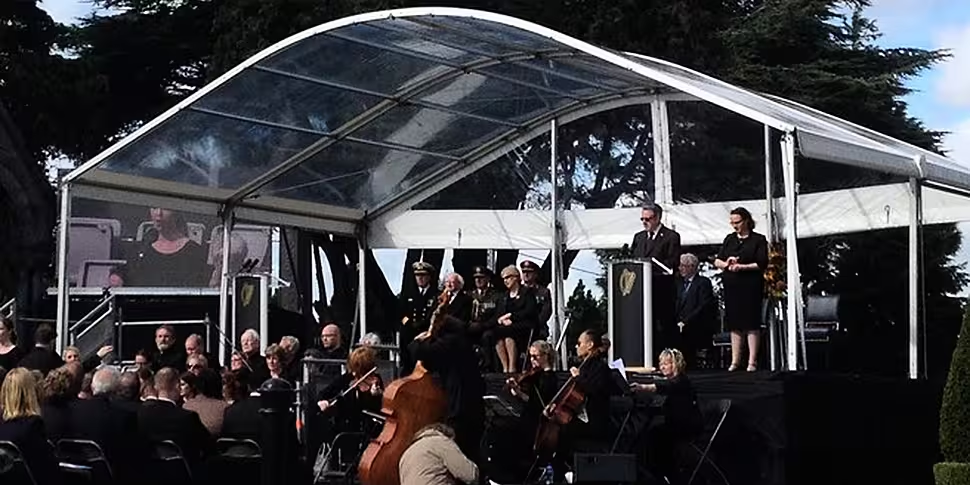Famine victims have been remembered at a state ceremony at Glasnevin Cemetery in Dublin, some 164 years after the outbreak of the devastating potato blight.
The National Famine Commemoration event included prayers of remembrance, military honours and a wreath-laying ceremony by ambassadors to Ireland.
President Michael D Higgins delivered an address before unveiling a famine cross as a memorial to the more than 1 million people who perished.
The mid-19th century Celtic cross, donated by Glasnevin Trust, will be permanently located outside the mortuary chapel.
After a minute of silence was observed, the national flag was raised to half-mast over the cemetery where dead of all beliefs and backgrounds were buried.
We are gathering in Glasnevin Cemetery today for the annual #Famine Commemoration with President @MichaelDHiggs pic.twitter.com/UryM9807O3
— Heather Humphreys (@HHumphreysFG) September 11, 2016
In his speech, President Higgins said the famine was never only the result of an accident of nature or series of mistakes.
"It took place in the context of empire and an imbedded atmosphere of conflict. It took place in a particular context of land ownership.
"Yes, it took its toll on a population that had massively increased – but hadn’t the population of the whole of Europe itself increased from 140 million people in 1740 to almost 270 million people in 1850?"
While the world today has the capacity to take measures to avoid famine, nearly a billion people still live in conditions of extreme but avoidable hunger, he said.
"The moral challenge of our humanity remains the same: should we adjust our populations to an abstracted economic ideology, or should we, rather, use the best of our reason to craft economic and social models that can anticipate the needs and care for the peoples who share this fragile planet?
"As we consider the Irish famine, it is, then, so important that we take account of the economic assumptions which served as context to it."
#OglaighNahEireann performed ceremonial duties for National Famine Memorial Day Commemoration in Glasnevin today. pic.twitter.com/cQUZLTn1fj
— DF Chief of Staff (@DF_COS) September 11, 2016
'Refugee city'
Speaking ahead of the event, Minister for Arts Heather Humphreys described Glasnevin as a fitting location for the memorial.
"Records from Glasnevin Cemetery show that at the height of the famine, 50 to 60 funerals were taking place here daily," she said.
"People from the four provinces of Ireland, those from Dublin and those who made their way there in search of reprieve, are buried throughout Glasnevin Cemetery, making it one of Ireland’s largest famine burial grounds."
The chairman of Glasnevin Trust, John Green, said he hoped such a commemoration would help to ensure the tragedy is never forgotten.
"Visitors to the cemetery are often surprised that it is also a famine burial site but from the midst of our eastern seaboard dominated country and our Dublin-centric economy it is difficult for us all to realise how utterly changed this island was post the famine.
"Dublin became a refugee city, death rates soared," he said.
"In this cemetery, daily burial numbers trebled and tens of thousands are buried here as result of the famine or famine-fostered fevers and diseases."









